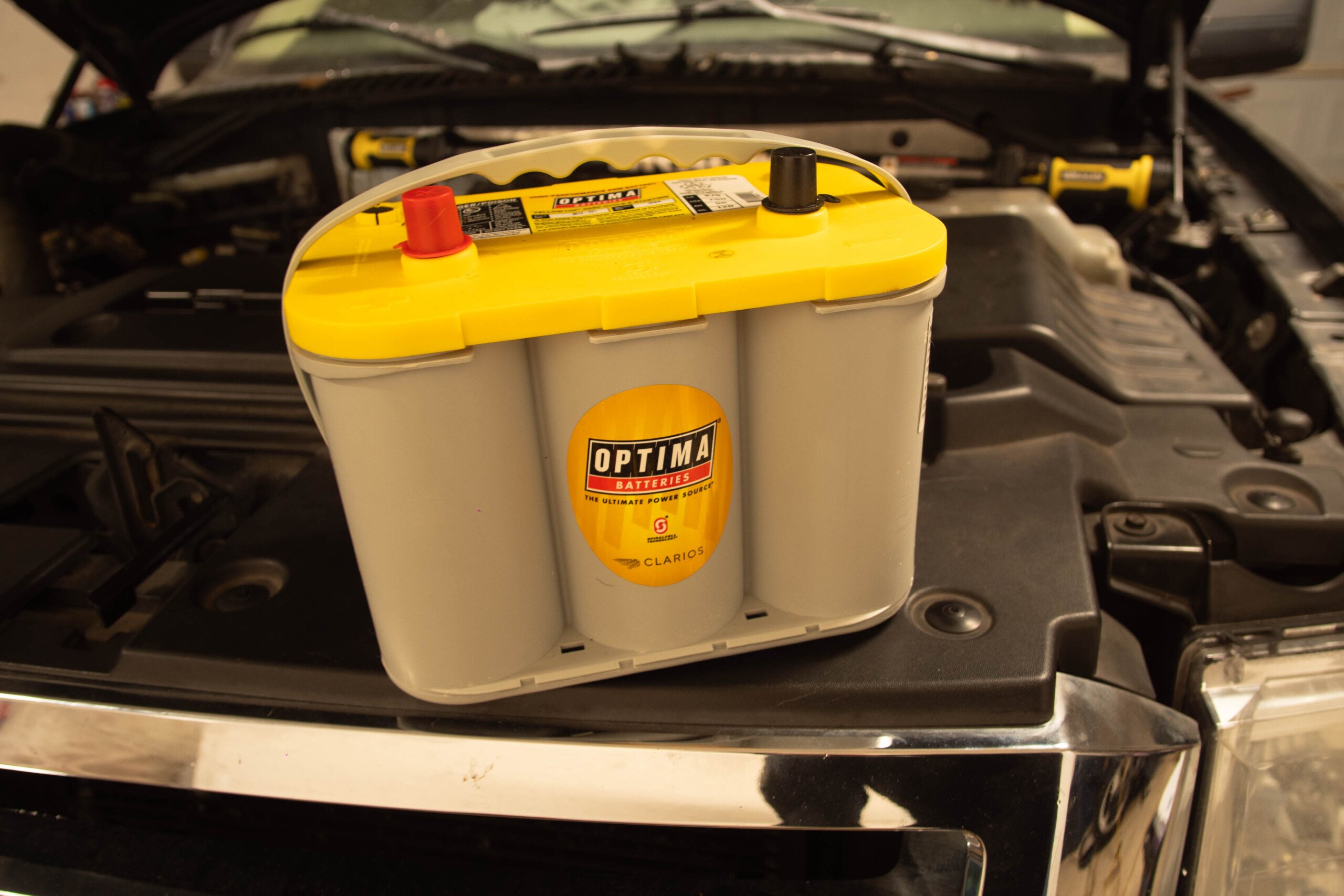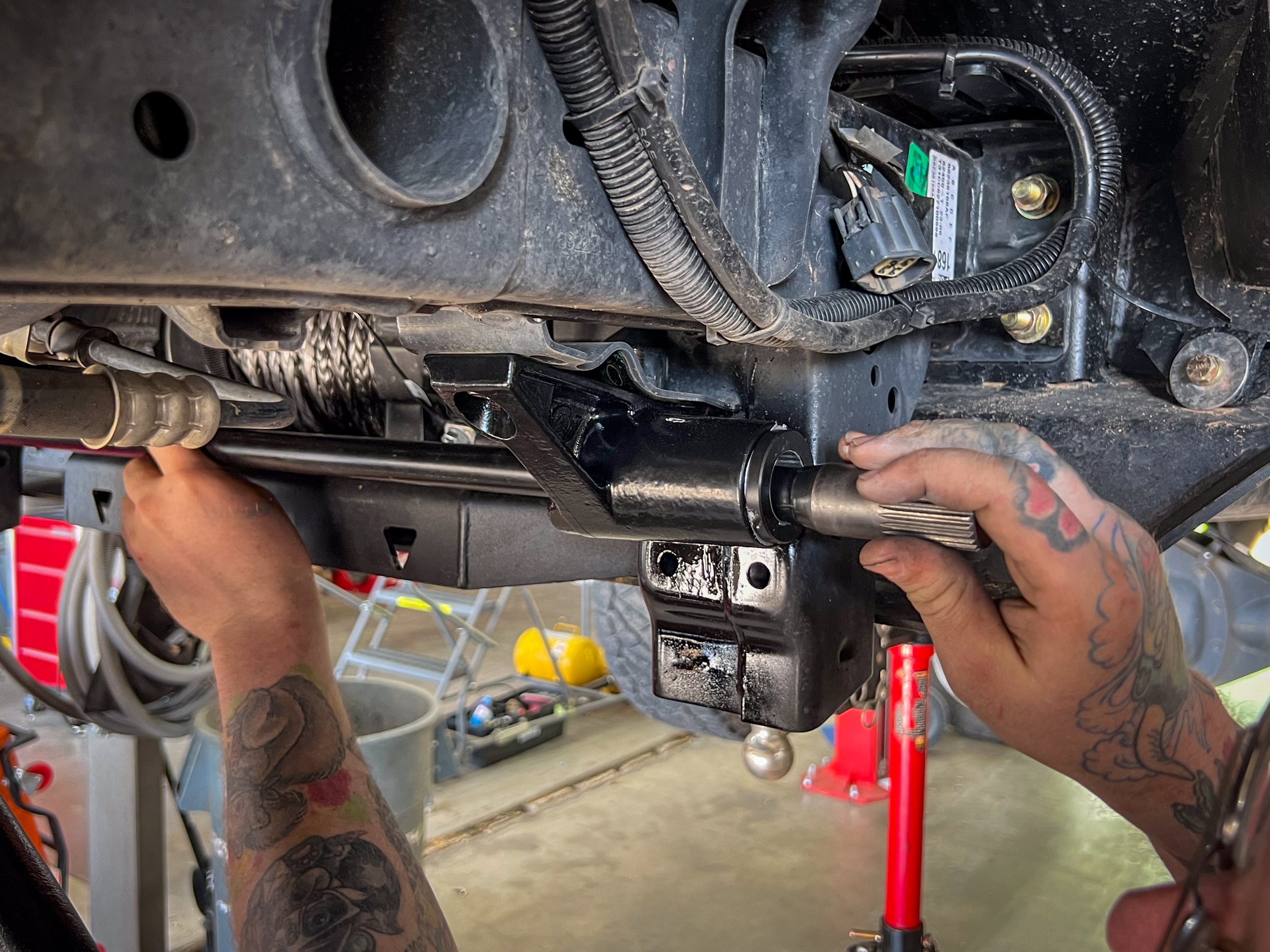From the 1980s through the early 2000s, Mitsubishi was deeply involved with off-road and rally racing. In these theaters, the brand honed its AWD and 4WD vehicle technologies. Whether it was a Mitsubishi Pajero (aka Montero) 4×4 in the Dakar Rally or an AWD Lancer Evolution in the World Rally Championship (WRC), Mitsubishi was a force to be reckoned with on the track and the trail. As is often the case, this technology trickled down to consumer vehicles. From the Mitsubishi Montero and Mighty Max pickup (also known as the L200 or Strada), and the Lancer Evolution, and even the Galant VR-4, Mitsubishi was pioneering AWD systems with its racing experience. And while the automaker isn’t as much into racing these days, the Mitsubishi S-AWC all-wheel-drive system is a direct result of competition.

The 2024 Mitsubishi Outlander PHEV and its S-AWC system is being tested in a slalom course. Photo credit: Mercedes Lilienthal
While the Montero and Lancer Evo may no longer be around, the company hasn’t stopped pioneering its AWD expertise. Known as S-AWC or Super All-Wheel Control, the brand’s high-tech AWD system lives on in three of its crossovers: Eclipse Cross, Outlander, and Outlander PHEV. The system is impressive from both technical and performance standpoints. We got the opportunity to experience how it works first-hand at ICAR COMPLEX located outside of Montreal, Quebec. Here, several journalists were briefed on how S-AWC works and then we put it to the test on snowy, icy test tracks.

The snow and ice track had quick corners, sweeping turns, tight slaloms, and straightaways. Photo credit: Mercedes Lilienthal
How Mitsubishi S-AWC Works
Before driving a 2024 Outlander PHEV, we had very detailed presentations via two engineers from Mitsubishi Motors Corporation in Japan. This included Kentaro Honda, C-Segment Chief Vehicle Engineer, and Kaoru Sawase, PhD, Engineering Fellow. Sawase is also known as the godfather of S-AWC and was one of the system’s pioneers.
Both Honda and Sawase explained in precise detail how the Mitsubishi S-AWC system works. From simple graphics and charts to mathematical equations revolving around center of gravity and lateral forces, it was clear S-AWC isn’t just a fancy term for an all-wheel-drive system.
To put it simply, the Mitsubishi S-AWC is comprised of three functions. First is longitudinal torque distribution, or how much power goes between the front and rear wheels. Then there’s lateral torque vectoring, which is how side-to-side power is shifted which affects yaw (e.g. how the vehicle rotates on a center axis). Finally, there’s four-wheel brake control which employs the vehicle’s antilock braking (ABS) and active stability control (ASC).

This Outlander PHEC is currently in Snow mode. Photo credit: Mitsubishi Motors of North America, Inc.
Unlike many other AWD systems, S-AWC works uses these aspects to keep the vehicle under control. The Outlander PHEV has a variety of selectable drive modes (normal, tarmac, gravel, snow, mud, power, and eco). The computer tells the S-AWC system how it should react on various road surfaces. Each function alters the way the vehicle will behave.
Sawase specifically called out the Outlander PHEV’s twin electric motors. It has a more powerful 100 kW motor at the rear wheels, it aids in traction, stability, and handling. It also helps provide the ideal longitudinal torque distribution control for any condition. Mitsubishi pioneered lateral torque vectoring in 1996.

Outlander PHEVs have a 2.4-liter four-cylinder gasoline engine, an 85 kW front motor, and a larger 100 kW rear motor mated to a CVT and a 20 kWh battery pack. Photo credit: Mitsubishi Motors of North America, Inc.
Testing On The Track
Our Diamond White Mitsubishi Outlander PHEVs would serve as our testing platform. These plug-in hybrids have a 2.4-liter four-cylinder gasoline engine, an 85 kW front motor, and that larger 100 kW rear motor, all mated to a CVT and carrying a 20 kWh battery pack. The vehicles rode on 20-inch Yokohama BluEarth Winter V905 tires for increased snow and ice traction. (Quebec requires winter tires from December 1 through March 15.) We’d run two tests in these AWD crossovers: one would be a circle track, the other an autocross, and we’d be paired with a driving instructor.

The 20-inch Yokohama BluEarth Winter V905 tires increase snow and ice traction. Photo credit: Mitsubishi Motors of North America, Inc.
A Circle In The Snow
First was the circle track; we started in snow mode. The S-AWC snow mode enhances the driver’s slip controllability and balances traction and cornering performance to improve control on slick roads. We brought the Outlander up to a steady 12 mph, wheel cocked slightly to the left to stay in the circle. Randomly, the driving instructor said to punch the throttle. The Outlander would start to lurch forward, but almost immediately, the S-AWC system would bring it back under control. We could feel it making the needed corrections, minimizing both understeer and oversteer, and maintaining traction, but it was very smooth and unobtrusive.

The Yokohama BluEarth snow tires have strategically placed 3D sipes to enhance snow and ice traction. Photo credit: Mercedes Lilienthal
Next, we’d put the Mitsubishi into normal mode to feel the difference in drive characteristics. Normal mode focuses on one thing: energy efficiency. The change was night and day, as you might have expected. Without snow mode, the vehicle would understeer heavily when we accelerated; quick corrections would then yield oversteer with the back end coming around. We also tried this exercise in an Outlander PHEV with the factory all-season Nexen tires, and everything was more exaggerated, and not for the better. Newsflash: Snow tires are better in snow and ice than non-snow tires; more at 11:00.

The collection of Mitsubishi PHEVs waited for the journalists to arrive. Photo credit: Mitsubishi Motors of North America, Inc.
Autocross Capability
Later, we lined up for a slippery autocross course littered with orange cones providing direction. The track had quick corners, sweeping turns, tight slaloms, and straightaways. We started in snow mode. While you couldn’t keep your foot to the floor (and why would you?), the S-AWC kept the seven-seat crossover controlled with minimal understeer and oversteer for winter conditions. While we wanted to slide the vehicle around corners throwing up a rooster tail of snow and ice behind, we knew the snow mode was all about security, confidence, and control.
A turn of the dial, and we went to normal mode to prove a point yet again. Going into sweeping corners, the front end would plow toward a set of cones; tight slaloms needed extra slow care and attention. Again, snow mode was where it was at for control.

Fellow OffRoad Xtreme contributor, Mercedes Lilienthal, is driving on the ice course. Photo credit: Mitsubishi Motors of North America, Inc.
A fellow journalist suggested trying the course in gravel mode, which allows more wheelspin and yaw, making the Outlander PHEV feel more like Mitsubishi’s rally vehicles of yore. We could slide out of corners and keep the power going without as much traction control and nanny devices hampering the action. This Outlander PHEV changed from a great family hauler to a hoonable rally rebel.
Mudfest 2023
We drove the Outlander PHEV at the Northwest Automotive Press Association’s (NWAPA) MudFest event in 2023. The vehicle is actually more fun on- and off-road than you might expect. A large part of this is because of the S-AWC system as well as a larger motor at the rear. That helps to induce oversteer when desired. Frankly, the S-AWC’s yaw control can provide quite a bit of entertainment. In fact, the 2023 Outlander PHEV won the NWAPA MudFest event. It wasn’t just us who believed this vehicle punched above its weight in the capability and entertainment department.

The Outlander PHEV’s interior is modern and luxurious. Photo credit: Mitsubishi Motors of North America, Inc.
Riding With The Godfather
Mitsubishi wanted to show off what the Outlander PHEV and its S-AWC system was capable of. The godfather, Sawase-San, gave ride-alongs. As the system’s pioneer (and well-published author of vehicle dynamics and control), he knew exactly how to handle this SUV. He put the vehicle into gravel mode, pushed a few buttons, and away we went. He drifted the Outlander PHEV around corners, with the Yokohama tires chewing at the snow for traction. We wove quickly (and often sideways) through the slalom course, sliding around sweepers, and blasting down the straights. Sawase-San was having a good time and so were we.

2024 Mitsubishi Outlander PHEV rear cargo area. Photo credit: Mitsubishi Motors of North America, Inc.
More Than Just Marketing
The Mitsubishi S-AWC system isn’t just marketing. It’s a highly technical system that works continuously to keep occupants safe and secure. Heck, you might even have fun in the process. The Outlander PHEV isn’t a hardcore off-roader. However, its ability to go into a variety of driving modes helps keep the vehicle in check. And it doesn’t matter what the road’s surface conditions may be. In fact, it’s one of the most advanced and underrated AWD systems on the market today.
Photos by Mercedes Lilienthal and Mitsubishi Motors of North America, Inc.





